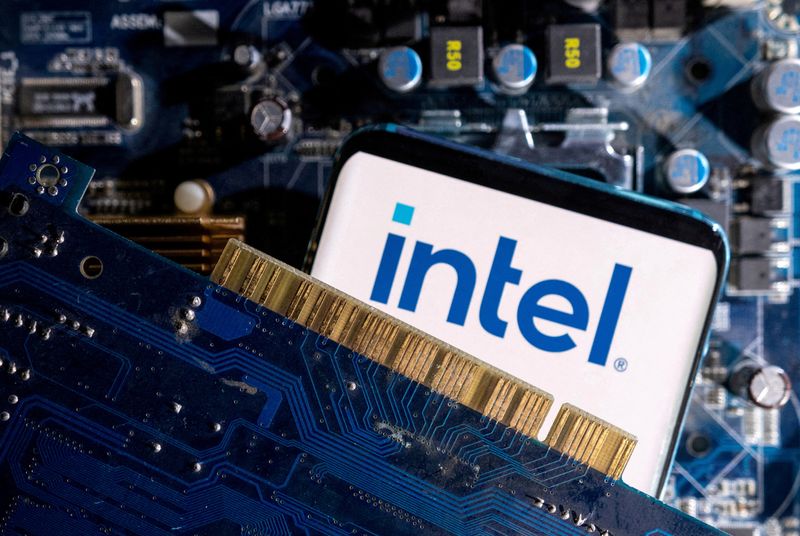By Max A. Cherney
SAN FRANCISCO (Reuters) – The sudden resignation of a high-profile Intel (NASDAQ:) board member got here after variations with CEO Pat Gelsinger and different administrators over what the director thought of the U.S. firm’s bloated workforce, risk-averse tradition and lagging synthetic intelligence technique, in response to three sources acquainted with the matter.
Lip-Bu Tan, a semiconductor {industry} veteran, had stated he was leaving the board due to a private choice to “reprioritize various commitments” and that he remained “supportive of the company and its important work,” in a regulatory submitting on Thursday.
The previous CEO of chip-software firm Cadence Design (NASDAQ:) joined Intel’s board two years in the past as a part of a plan to revive Intel’s place because the main international chipmaker. The board expanded Tan’s tasks in October 2023, authorizing him to supervise manufacturing operations.
Over time, Tan grew annoyed by the corporate’s giant workforce, its method to contract manufacturing and Intel’s risk-averse and bureaucratic tradition, in response to the sources, who weren’t licensed to talk publicly.
The circumstances round Tan’s exit haven’t beforehand been reported. The departure of the {industry} veteran, who’s well-regarded by buyers, over Intel’s technique illustrates the uncertainty of its turnaround efforts.
Tan leaves as the corporate endures one of many bleakest durations in its five-decade historical past that has left it susceptible to a possible activist shareholder assault, former executives stated. Intel has employed funding financial institution Morgan Stanley to organize a protection, in response to sources acquainted with the matter, confirming an earlier report.
Intel, headquartered in California, declined to remark. Tan’s enterprise capital agency, Walden Catalyst, didn’t reply to a request for remark.
Tan’s exit leaves a vacuum of chip-industry technical and enterprise acumen on the board, which is populated by leaders in academia and finance, and former senior executives from the medical, tech and aerospace industries, say buyers and semiconductor {industry} insiders.
Former Intel executives advised Reuters the corporate started getting ready for a possible activist risk months in the past. Reuters couldn’t independently affirm if any shareholders have been getting ready an method.
‘ONLY THE PARANOID SURVIVE’
This month, Intel paused its dividend that it had been paying for many years when it reported outcomes and plans to scale back capital spending on manufacturing facility building. The subsequent day, buyers wiped greater than $30 billion from its market worth, or greater than 1 / 4 of its value.
Intel’s struggles are occurring towards the backdrop of aggressive funding and gross sales from rivals swept up by the surge of curiosity in synthetic intelligence. The AI increase turned graphics chipmaker Nvidia (NASDAQ:) right into a $3-trillion market-cap firm. Intel handed on a chance in 2018 to take as a lot as a 30% stake in ChatGPT-maker OpenAI, Reuters beforehand reported.
Intel acquired a minimum of two AI startups, amongst greater than 4 efforts since 2010 to construct a blockbuster AI chip, in response to former executives. Regardless that its Habana acquisition yielded promising AI chips, its senior leaders left to kind a rival effort in Israel, hurting Intel’s program, two sources stated.
To chop prices, Intel introduced in August layoffs of greater than 15% of its workforce, its second spherical of cuts in two years. Intel had practically 125,300 workers globally in response to its August monetary outcomes.
The layoff plan was one supply of stress between Tan and the board, in response to sources. Tan wished particular cuts, together with center managers who don’t contribute to Intel’s engineering efforts.
Gelsinger, who took over in 2021 as a part of a turnaround plan, added a minimum of 20,000 workers to Intel’s payroll by 2022.
To Tan and a few former Intel executives, the workforce appeared bloated. Groups on some initiatives have been as a lot as 5 instances bigger than others doing comparable work at rivals akin to Superior Micro Gadgets (NASDAQ:), in response to two sources. One former govt stated Intel ought to have lower double the quantity it introduced in August years in the past.
Tan has advised individuals he believed Intel was overrun by bureaucratic layers of center managers who impeded progress at Intel’s server and desktop chips divisions and the cuts ought to have targeted on these individuals.
Intel’s workforce, which is bigger than these of Nvidia and Taiwan Semiconductor Manufacturing Co mixed, has led to a complacent and uncompetitive tradition, removed from the “only-the-paranoid-survive” ethos of Intel co-founder Andy Grove, former Intel executives stated.
MANUFACTURING STRUGGLE
Intel’s turnaround plan depends on constructing its foundry enterprise, which helps different firms manufacture chips, much like TSMC. However the firm has not disclosed a giant buyer and has stated the enterprise just isn’t anticipated to show a revenue till 2027.
An try final 12 months to interrupt into contract-manufacturing by way of a $5.4-billion buy of Israel-based chip producer Tower Semiconductor (NASDAQ:) was scuttled after China blocked the deal. Intel would have obtained a corporation devoted to contract chipmaking, one thing Intel has by no means accomplished efficiently.
With out Tower, Intel, traditionally a maker of its personal chips, lacks the experience to work with exterior clients, which it has struggled to draw, in response to 4 sources acquainted with Intel’s manufacturing enterprise.

Tan grew annoyed because the board didn’t observe his suggestions over the best way to make the manufacturing enterprise extra customer-centric and to take away pointless forms, an individual near Tan stated.
Intel has continued to construct new factories in Ohio, Arizona and throughout Europe with out naming new clients.




